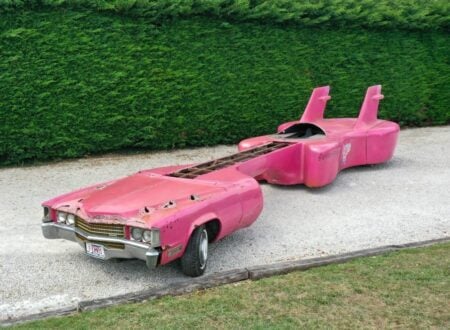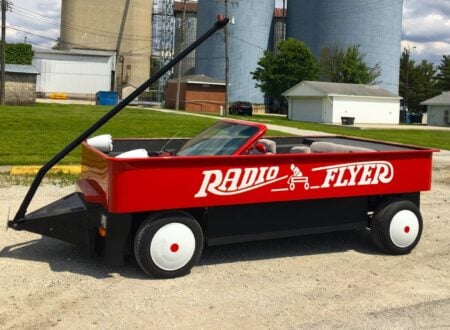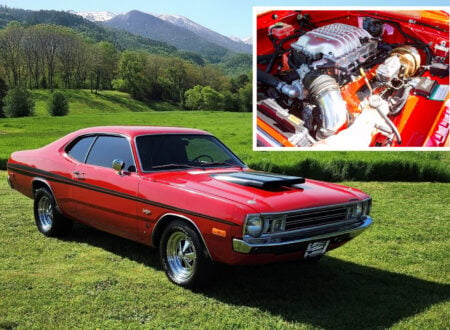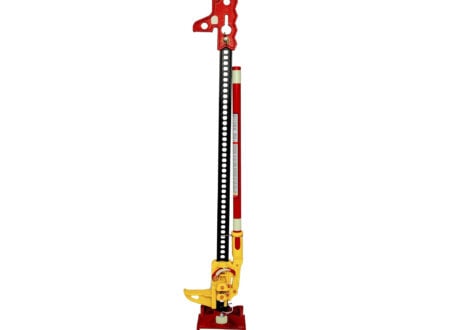This is a 1989 Land Rover Defender that was fitted with a 3.5 liter over V8 from the factory, it’s not one of those popular aftermarket conversions. It also came from the factory with a soft top fitted, and the desirable 5-speed manual transmission.
The vast majority of Land Rover Defenders that were built were fitted with one of the company’s turbodiesel engines, the 3.5 liter V8s are more rare, and thanks to their considerably higher power output they’re a lot of fun to drive both on road and off.
Fast Facts – A V8 Land Rover Defender
- The Land Rover Defender first appeared in 1983, though it was originally badged as the “Land Rover One Ten” and the “Land Rover Ninety.” After the release of the Discovery in 1989 Land Rover needed to differentiate their model lines, and so the name Defender was chosen, going into use in 1991.
- The Defender was a significantly upgraded version of the Series 3 Land Rover that had come before it, with new coil spring suspension instead of leaf springs, permanent four-wheel drive, a more modern interior, a taller windscreen made of a single pane of glass, and more modern engines and transmissions.
- Releasing a new Land Rover is always challenging, as Land Rover enthusiasts are often life-long owners with strong ideas about what a real Land Rover is. The Defender proved wildly successful, and it remains so today years after production ended.
- The Land Rover Defender you see here was factory-fitted with the Rover V8. A 3.5 liter petrol engine that has its roots in the 215 cubic inch alloy Buick V8 from the 1960s. It offers excellent power and torque output for its relatively low weight.
The Rover V8 And The Defender
The story of how the Rover V8 came to be is fascinating, it started out as the Buick 215 cubic inch V8 that had originally been released in 1961.
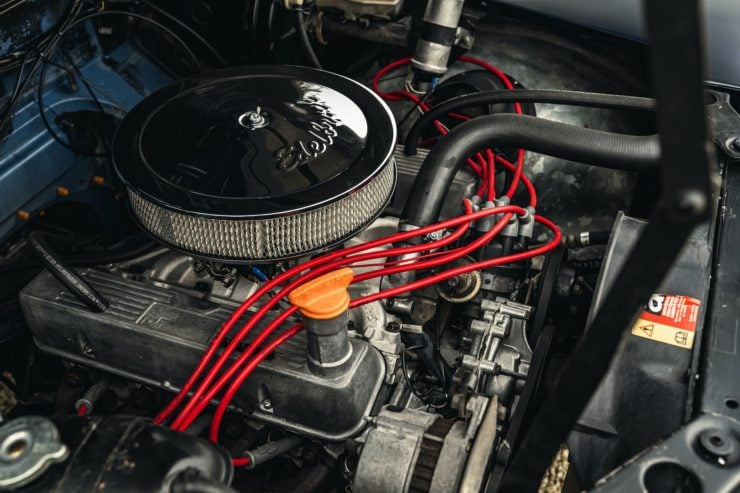

It was an unusually small and lightweight V8 thanks to its aluminum-alloy block and heads, and its displacement of 3.5 liters, much smaller than most comparable American V8s.
Interestingly Buick only kept the engine in production until 1963, when it was replaced by a similar engine with an iron block, then later by engines with an iron block and heads.
British automaker Rover was looking for a more powerful engine for upcoming production cars and so a deal was struck with General Motors to buy the tooling and rights to the defunct Buick 215 V8. Rover engineers largely reengineered the engine to make it stronger, then released it in a passenger car in 1967.
They can’t have known it at the time, but the Rover V8 would become one of the most important performance engines in British history. It powered everything from Range Rovers and Land Rovers to race cars and high performance sports cars built by companies like TVR, MG, Morgan, and many others.
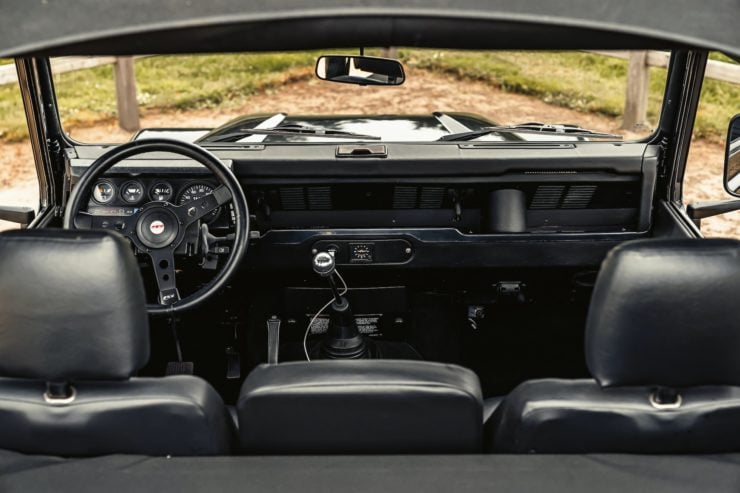

The engine’s low weight, good torque characteristics, reliability, and simplicity made it ideal for use in four-wheel drive applications like the Defender – so much so that many aftermarket conversions have been completed over the years. But collectors always tend to prefer factory-built examples.
The 1989 Land Rover Defender V8 Shown Here
The vehicle you see here is an upgraded 1989 Land Rover Defender V8, as mentioned above this vehicle came from the factory with this engine installed, but a number of other improvements have been undertaken to bring it up to a modern standard.
This Defender is also an original soft top model, a rarer option than the standard hard top and another common aftermarket conversion.
Among the upgrades that have been applied to this vehicle is a retrimmed interior with black leather Exmoor Trim upholstery, a Mountney Classic steering wheel, a smart USB output, an Edelbrock carburetor on a new intake manifold, and the paintwork has been resprayed in the original Midnight Blue.
It’s now riding on 16 inch steel wheels with gold centre caps wrapped with knobby Comforser CF3000 mud tires. A tubular steel rear bumper has been fitted, as has a tow ball, and there are rocker guards mounted on either side.
The car is currently for sale on Collecting Cars in a live online auction, if you’d like to read more about it or register to bid you can click here to visit the listing.
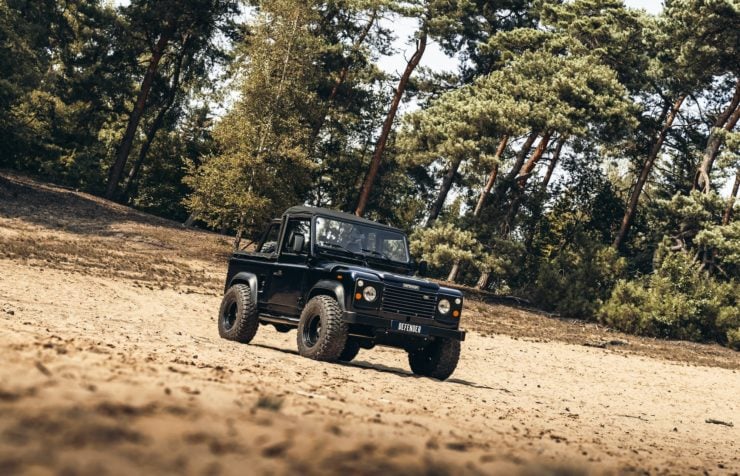

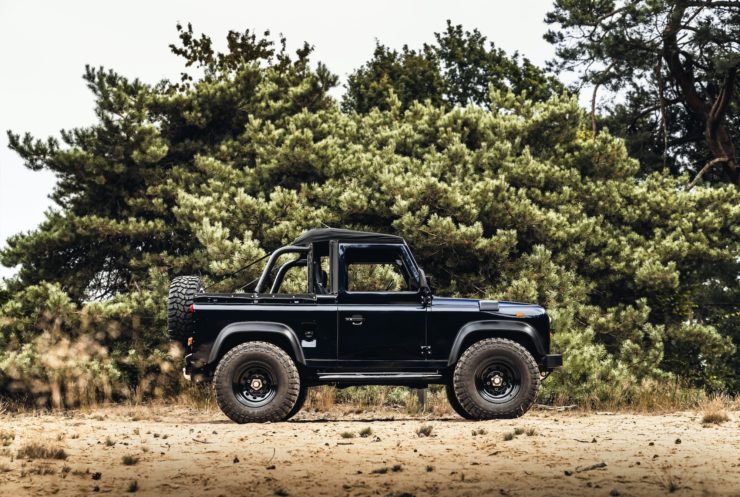

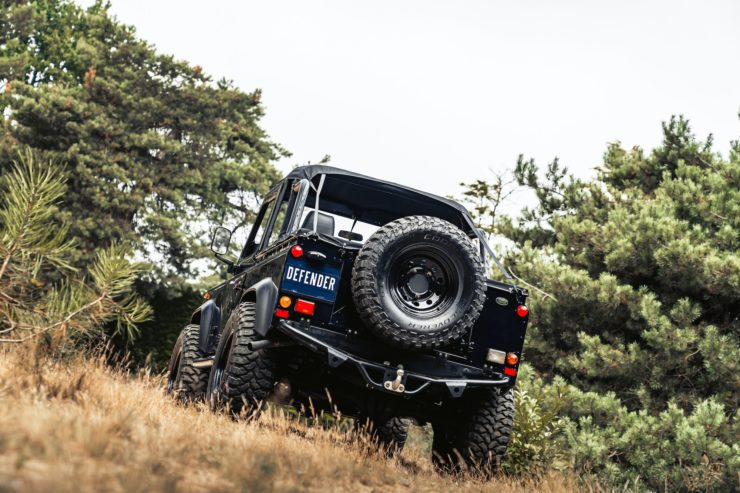
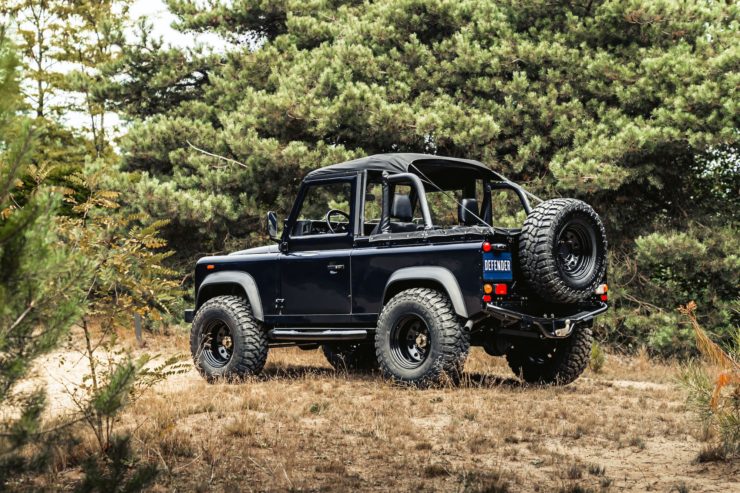

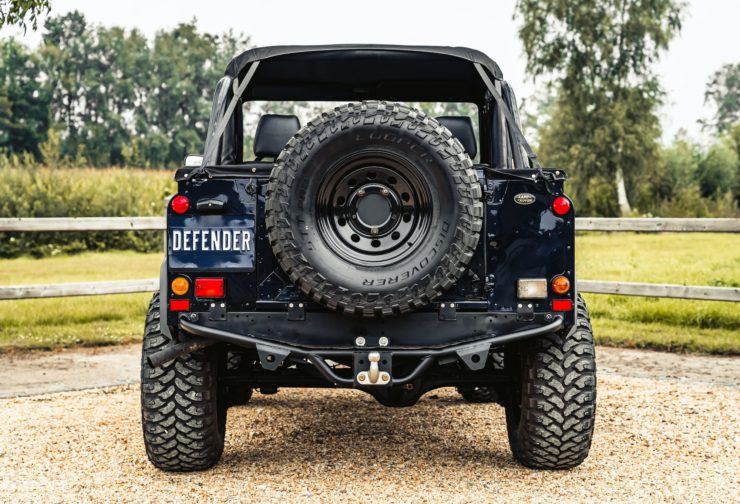
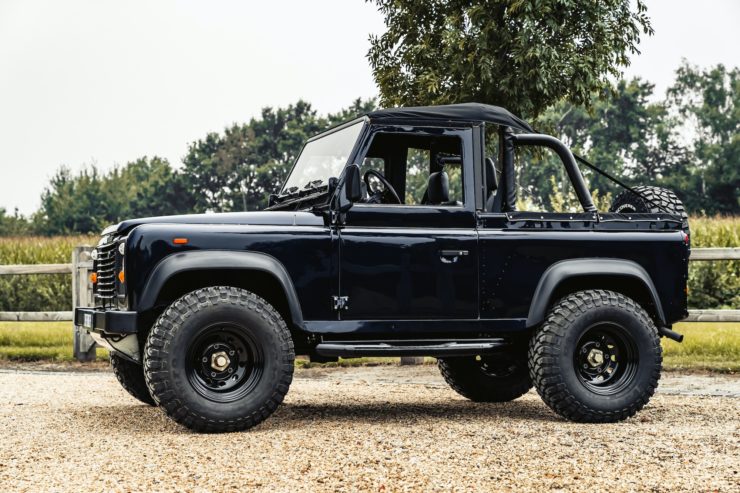

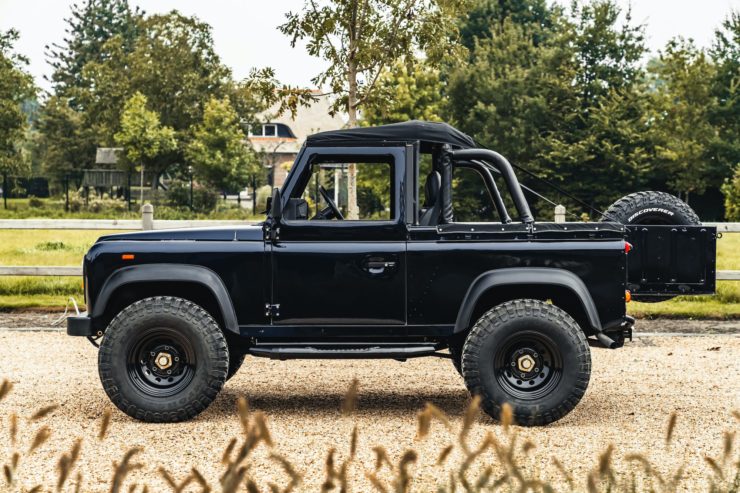

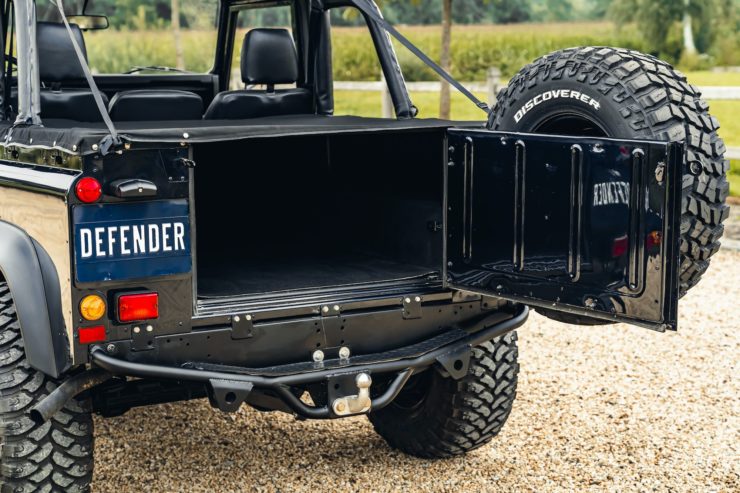
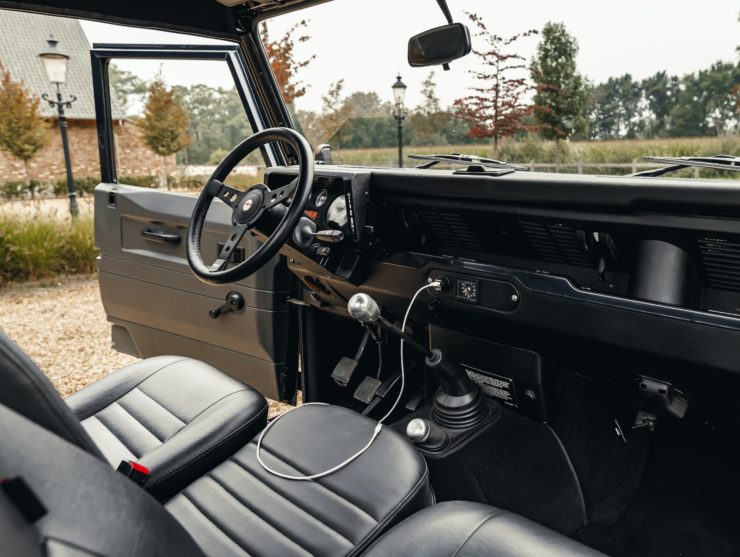

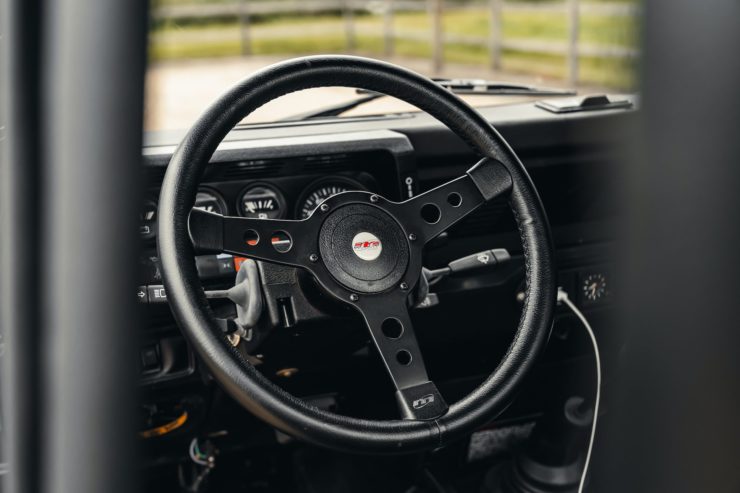
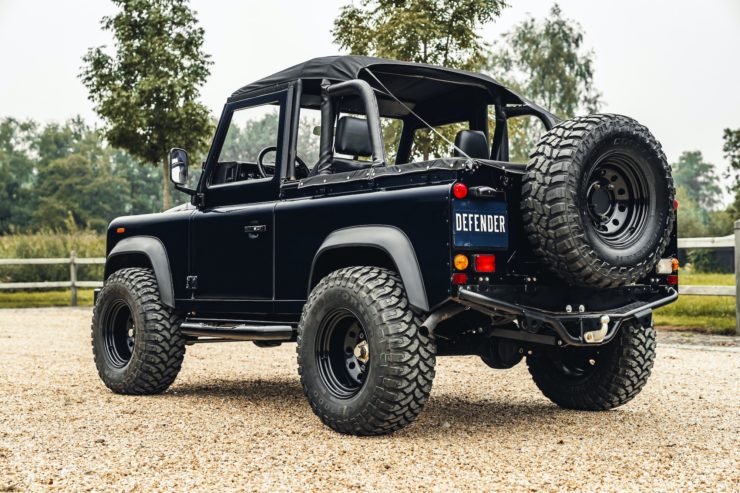
Images courtesy of Collecting Cars



